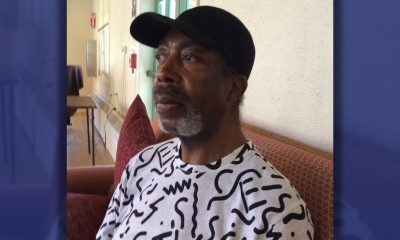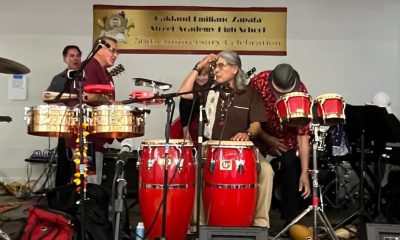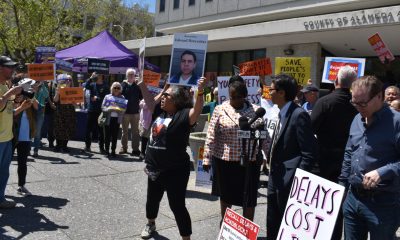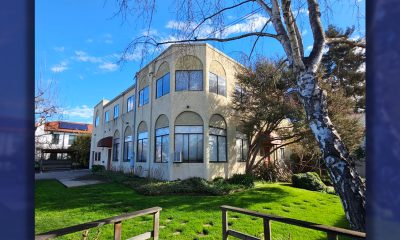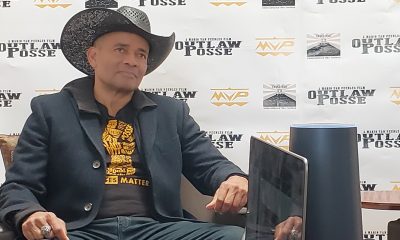Bay Area
Oakland Healthcare Unions Denounce CDC and California’s New Guidelines
While federal and California state guidelines now allow healthcare workers who test positive for COVID-19 to return to work without quarantining as long as they are asymptomatic until at least February 1, it’s unclear what this will mean for several Oakland healthcare facilities.
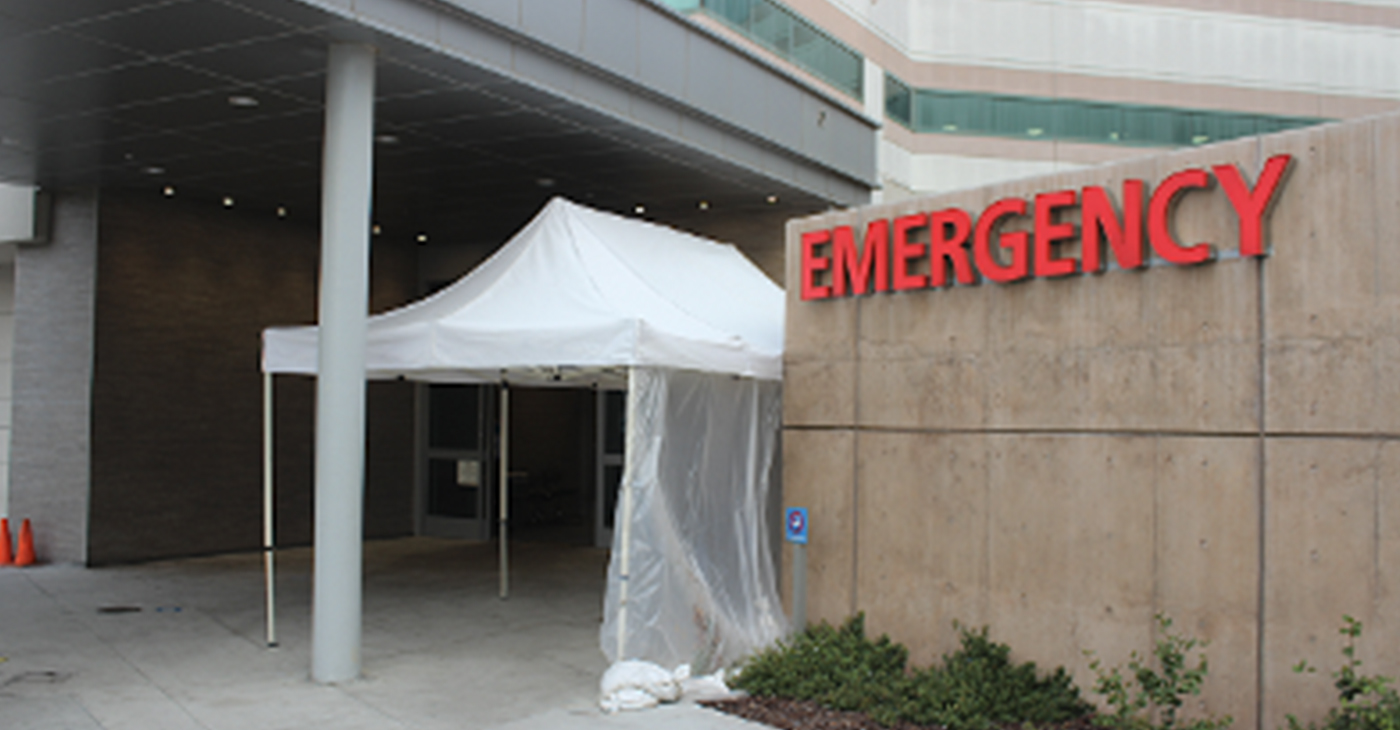
By Zack Haber
Two unions representing healthcare professionals have denounced recent moves by the Center for Disease Control (CDC) and The California Department of Public Health that have eased, or in some cases temporarily eliminated, quarantining guidelines for those who have tested positive for COVID-19 or been directly exposed to the virus.
“Part of why there’s this rise in transmission is that people aren’t quite well and they’re able to come out and mingle with the public,” said Zenei Triunfo-Cortez in an interview. Triunfo-Cortez has worked as a registered nurse for 42 years, and she’s the president of National Nurses United (NNU), a registered nurses’ union with over 175,000 members.
On December 22 of last year, as news that the CDC was considering shortening their COVID-19 quarantine duration guidelines from 10 days to five days was spreading, the NNU published an open letter to the director of the CDC, Dr. Rochelle Walensky, that urged her to maintain the 10-day quarantine period.
“Weakening COVID-19 guidance now, in the face of what could be the most devastating COVID-19 surge yet,” the letter reads, “will only result in further transmission, illness and death.”
On December 23, the CDC changed their guidelines for healthcare workers. To address staffing shortages, the new guidelines stated that medical facilities could have both vaccinated and unvaccinated healthcare workers who test positive for the virus return to their jobs immediately without quarantining in certain crisis situations as long as they were either asymptomatic or mildly symptomatic.
On December 27, the CDC changed their guidelines for the rest of the population, shortening the quarantining period from 10 to five days. The new guidelines stated that as long as a COVID-positive person has no symptoms or their symptoms are resolving and they don’t have a fever, they can end their quarantine on the sixth day.
“The change is motivated by science demonstrating that the majority of [COVID-19] transmission occurs early in the course of the illness,” reads a statement from the CDC about the reduced quarantine guideline, “generally in the 1-2 days prior to onset of symptoms and 2-3 days after.”
In their letter, the NNU pointed to the extremely contagious Omicron variant, and warned “Now is not the time to relax protections.” They mentioned pressure from businesses to maintain profits “without regard for science or the health of employees or the public” as the primary motivation for shortening the quarantine time. The letter included a link to a story about Delta Airlines CEO Ed Bastian asking the CDC to consider such a change.
Data from Alameda County, and California show that after the Omicron variant of COVID-19 began to become widespread in mid-December, local and statewide cases surged. By late December, average daily case rates were higher than they ever had been before.
Hospitalizations also rose sharply. Then cases and hospitalizations continued to rise through early January and have continued to rise. At the time of publication, information on recent COVID-19 deaths is unclear as the county and the state are updating that data.
“It’s stressful because some of our co-workers might be coming into work sick,” said Sonya Allen-Smith in an interview on January 7 about working under the new guidelines. She’s been an X-ray technologist at a Kaiser Permanente facility in Oakland for 13 years and is a member of the SEIU UHW union for healthcare workers.
“We think about if we’re going to take it home to our families,” she said. “My husband’s immune system is compromised. If I bring it home to him, he definitely will not make it.”
The Oakland Post obtained a flow chart Kaiser e-mailed to their employees on January 7 that guided them through the quarantine process the company required them to enter into if they tested positive for COVID-19.
It showed Kaiser employees had to quarantine for five days and could return on the sixth day if they tested negative for the virus with an antigen test. Allen-Smith said she felt the quarantine period was too short.
“We’re not giving people enough time to heal or recover,” Allen-Smith said. “Weakening the guidelines is not going to stop the staff shortage. It may increase it because people will spread it.”
In an e-mail, Kaiser Permanente’s media team wrote that they’re “implementing CDC and CDHP guidance and isolation with considerations to vaccination status and staffing levels.” It also stated that “all employees coming back or continuing to work, wear the appropriate PPE and follow all infection prevention measures.”
On January 8, the California Department of Public Health (CDPH) decided to temporarily adopt the guidance for healthcare workers the CDC had released on December 23 to address staffing shortages at healthcare facilities.
“From January 8, 2022 until February 1, 2022, healthcare professionals who test positive for [COVID-19] and are asymptomatic,” reads their statement announcing the new guidelines, ”may return to work immediately without isolation and without testing.”
The statement also said such returning employees would have to wear N95 masks while working and that these new guidelines could again change as information becomes available.
Both the NNU and the SEIU-UHW unions immediately denounced CDHP’s decision.
“For healthcare workers on the frontline it is very disappointing to see the State of California bypass common sense safety measures,” said Gabe Montoya, an emergency room technician, in a statement SEIU-UHW released. “No patient wants to be cared for by someone who has COVID-19 or was just exposed to it.”
While federal and California state guidelines now allow healthcare workers who test positive for COVID-19 to return to work without quarantining as long as they are asymptomatic until at least February 1, it’s unclear what this will mean for several Oakland healthcare facilities.
When asked for a statement about their Bay Area healthcare facilities, Sutter Health’s media team wrote an email stating: “Consistent with CDC contingency tiered guidelines released in late December, and in response to critical staffing conditions, we have revised our process for how employees who work at patient care sites return after they have been sick with symptoms consistent with COVID-19. It’s important to note that symptomatic employees are not returning to work until their symptoms improve.”
When asked directly if asymptomatic COVID positive employees were currently returning to work, Sutter Health’s media team did not respond.
When asked about their current COVID-19 quarantine policies, Alameda Health System’s media and communications manager Eleanor Ajala wrote “Alameda Health System is reviewing guidance” and that they planned to attend a meeting with the state to discuss the issue.
On January 11, Allen-Smith said she hadn’t heard of any change to Kaiser Permanente’s quarantine policy, but that she knows three co-workers sick with COVID-19 who had just returned after five-day quarantines.
In an e-mail, Kaiser Permanente’s media team wrote that to address staffing shortages they were “employing traveling nurses, adjusting elective and non-urgent surgeries and procedures as needed, and offering our industry-leading telehealth capabilities in addition to in-person care.”
The media team did not directly answer when asked if Kaiser was allowing asymptomatic COVID positive employees to return to the job at Bay Area healthcare facilities.
Allen-Smith is unhappy about the guidelines changing and is unsure if Kaiser’s policy will further change in the near future due to CDHP’s recent announcement.
“A lot of us are confused and sad and just don’t feel safe in the workplace,” she said.
Activism
S.F. Black Leaders Rally to Protest, Discuss ‘Epidemic’ of Racial Slurs Against Black Students in SF Public School System
Parents at the meeting spoke of their children as no longer feeling safe in school because of bullying and discrimination. Parents also said that reported incidents such as racial slurs and intimidation are not dealt with to their satisfaction and feel ignored.

By Carla Thomas
San Francisco’s Third Baptist Church hosted a rally and meeting Sunday to discuss hatred toward African American students of the San Francisco Unified School District (SFUSD).
Rev. Amos C. Brown, president of the San Francisco NAACP and pastor of Third Baptist Church, along with leadership from local civil rights groups, the city’s faith-based community and Black community leadership convened at the church.
“There has been an epidemic of racial slurs and mistreatment of Black children in our public schools in the city,” said Brown. “This will not be tolerated.”
According to civil rights advocate Mattie Scott, students from elementary to high school have reported an extraordinary amount of racial slurs directed at them.
“There is a surge of overt racism in the schools, and our children should not be subjected to this,” said Scott. “Students are in school to learn, develop, and grow, not be hated on,” said Scott. “The parents of the children feel they have not received the support necessary to protect their children.”
Attendees were briefed last Friday in a meeting with SFUSD Superintendent Dr. Matt Wayne.
SFUSD states that their policies protect children and they are not at liberty to publicly discuss the issues to protect the children’s privacy.
Parents at the meeting spoke of their children as no longer feeling safe in school because of bullying and discrimination. Parents also said that reported incidents such as racial slurs and intimidation are not dealt with to their satisfaction and feel ignored.
Some parents said they have removed their students from school while other parents and community leaders called on the removal of the SFUSD superintendent, the firing of certain school principals and the need for more supportive school board members.
Community advocates discussed boycotting the schools and creating Freedom Schools led by Black leaders and educators, reassuring parents that their child’s wellbeing and education are the highest priority and youth are not to be disrupted by racism or policies that don’t support them.
Virginia Marshall, chair of the San Francisco NAACP’s education committee, offered encouragement to the parents and students in attendance while also announcing an upcoming May 14 school board meeting to demand accountability over their mistreatment.
“I’m urging anyone that cares about our students to pack the May 14 school board meeting,” said Marshall.
This resource was supported in whole or in part by funding provided by the State of California, administered by the California State Library via California Black Media as part of the Stop the Hate Program. The program is supported by partnership with California Department of Social Services and the California Commission on Asian and Pacific Islander American Affairs as part of the Stop the Hate program. To report a hate incident or hate crime and get support, go to CA vs Hate.
Bay Area
Mayor London Breed: State Awards San Francisco Over $37M for Affordable Housing
On April 30, Mayor London N. Breed announced San Francisco has been awarded more than $37.9 million in funding from the California Department of Housing and Community Development (HCD) as part of the State’s Multifamily Housing Program (MHP). The HCD loan will provide the final funding necessary for development of Casa Adelante – 1515 South Van Ness, a 168-unit affordable housing project located in San Francisco’s Mission District.

By Oakland Post Staff
On April 30, Mayor London N. Breed announced San Francisco has been awarded more than $37.9 million in funding from the California Department of Housing and Community Development (HCD) as part of the State’s Multifamily Housing Program (MHP).
The HCD loan will provide the final funding necessary for development of Casa Adelante – 1515 South Van Ness, a 168-unit affordable housing project located in San Francisco’s Mission District.
The new development at 1515 South Van Ness Ave. will provide 168 affordable homes to low-income families, formerly homeless families, and persons living with HIV earning between 25-80% of the San Francisco Area Median Income (AMI).
In addition, the project is anticipated to provide family-friendly amenities and ground floor community-serving commercial spaces that preserve the prevailing neighborhood character of the Calle 24 Latino Cultural District.
“This funding unlocks our ability to move on building affordable housing units for families in San Francisco at a crucial time. We understand the level of need for more housing that is accessible, and like the state, the city continues to face a challenging budget cycle,” said Breed. “1515 South Van Ness is a good example of what can be achieved in San Francisco when you have strong community partnerships and an unwavering commitment to deliver on critical needs for our residents.”
“From the beginning of my term as Supervisor, I have fought to bring affordable housing to 1515 South Van Ness” said Supervisor Hillary Ronen. “In the interim, the site has been utilized for homeless services and shelter, and I am thrilled that HCD has recognized the value of this development, and we are finally ready to break ground and bring 168 affordable homes to low income and formerly homeless families in the Mission.”
Owned and occupied by McMillan Electric Company until 2015, the City and County of San Francisco purchased 1515 South Van Ness Avenue in June 2019 with the intent of developing new affordable housing.
In November 2020, the San Francisco Mayor’s Office of Housing and Community Development (MOHCD) released a Multi-site Request for Qualifications (RFQ) seeking qualified developers to build affordable housing on the site, and subsequently selected Chinatown Community Development Corporation (CCDC) and Mission Economic Development Agency (MEDA) in May 2021 to develop the site.
The project is expected to begin construction in winter 2025.
“A strong, long-term push by Mission advocates to make this site 100% affordable is now paying off, with 168 family units that include services and childcare. People of color communities know what they need, and we are excited to be in partnership with a team, consisting of MEDA, CCDC, and MOHCD, that listens,” said Malcolm Yeung, Executive Director at CCDC.
“We are excited to be in partnership with CCDC, yet again, and for the opportunity to develop intergenerational affordable housing in the City’s Mission District,” said Luis Granados, executive director at MEDA.
Increasing housing affordable to lower-income and vulnerable residents is a key priority in the City’s Housing Element which calls for additional funding for affordable housing production and preservation, as well as Mayor Breed’s Housing for All Executive Directive that sets out the steps the City will take to meet the bold goal of allowing for 82,000 new homes to be built over the next eight years.
Tuesday’s funding announcement emphasizes the importance of regional and state collaboration in order to reach our housing and climate goals.
“We are thrilled—not just to bring a project of this size to a community with great need — but to do so with community-based developers and their partners who understand the neighborhood and sensitivities around cultural preservation,” said HCD Director Gustavo Velasquez.
Bay Area
East Bay Regional Park District Issues Rattlesnake Advisory
The East Bay Regional Park District released an advisory today on rattlesnakes, which emerge from winter hibernation in early spring and become more active. Warm weather can bring more potential for rattlesnake encounters with humans and dogs, particularly along trails and roads.
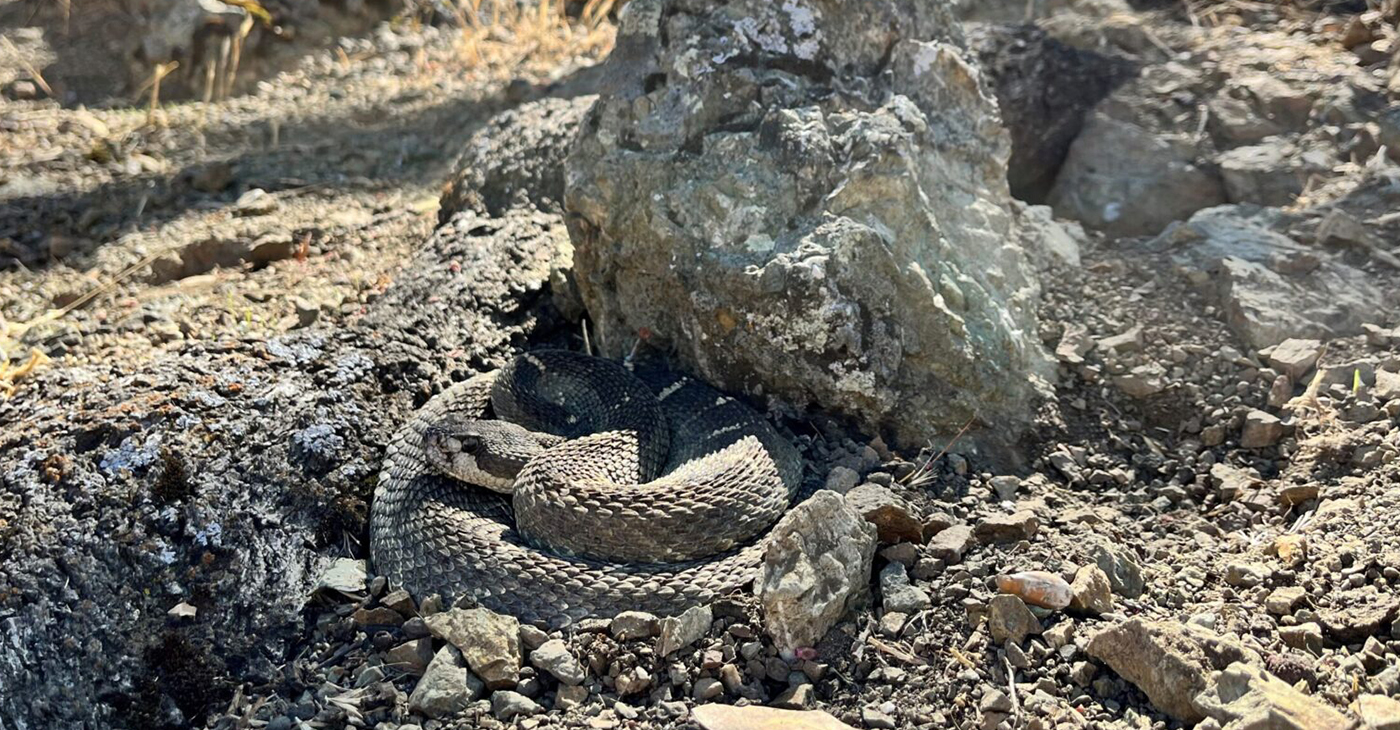
The Richmond Standard
The East Bay Regional Park District released an advisory today on rattlesnakes, which emerge from winter hibernation in early spring and become more active.
Warm weather can bring more potential for rattlesnake encounters with humans and dogs, particularly along trails and roads.
Visitors are encouraged to avoid hiking alone in case of an emergency, to scan the ground ahead as they walk, jog or ride, stay on trails avoiding tall grass, and to look carefully around and under logs and rocks before sitting down. Keep your dog on your leash to be extra safe, park officials said.
If you encounter a rattlesnake, leave it alone – it is unlawful to capture or harm one. Move carefully and slowly away or around it and give it plenty of space, park officials said.
Those who are bitten by a rattlesnake are instructed to stay calm by lying down with the affected limb lower than the heart, then having someone call 911.
Getting medical attention is critical.
Those bitten should not use tourniquets, “sucking,” or snake bite kits. If you are by yourself, walk calmly to the nearest source of help to dial 911, do not run.
If bitten by any other type of snake, wash the wound with soap and water or an antiseptic and seek medical attention.
Not sure what bit you? Check the bite for two puncture marks (in rare cases one) associated with intense, burning pain, which is typical of a rattlesnake bite. Other snakebites can leave marks without associated burning pain.
The Northern Pacific rattlesnake is the species found in East Bay Regional Parks. Snakes are important to the natural environment, helping to control rodents and other reptile populations. But enjoy them from afar.
For more information, download the Park District’s Common Snakes brochure or watch our Gopher Snake or Rattlesnake video to learn how to tell the difference between rattlesnakes and gopher snakes. Additional information is available at ebparks.org/safety/wildlife-encounters.
-

 Community3 weeks ago
Community3 weeks agoFinancial Assistance Bill for Descendants of Enslaved Persons to Help Them Purchase, Own, or Maintain a Home
-

 City Government5 days ago
City Government5 days agoCourt Throws Out Law That Allowed Californians to Build Duplexes, Triplexes and RDUs on Their Properties
-

 Business3 weeks ago
Business3 weeks agoV.P. Kamala Harris: Americans With Criminal Records Will Soon Be Eligible for SBA Loans
-

 Activism2 weeks ago
Activism2 weeks agoOakland Post: Week of April 24 – 30, 2024
-

 Activism4 weeks ago
Activism4 weeks agoOakland Post: Week of April 10 – 16, 2024
-

 Community3 weeks ago
Community3 weeks agoAG Bonta Says Oakland School Leaders Should Comply with State Laws to Avoid ‘Disparate Harm’ When Closing or Merging Schools
-

 Community3 weeks ago
Community3 weeks agoRichmond Nonprofit Helps Ex-Felons Get Back on Their Feet
-

 Community3 weeks ago
Community3 weeks agoOakland WNBA Player to be Inducted Into Hall of Fame

